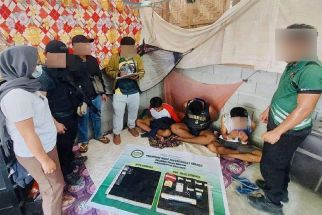Phl has 5,000 landslides in the last decade
MANILA, Philippines - Close to 5,000 landslides hit the country in the last decade, further highlighting the need to step up disaster preparedness and mitigation measures, an official said Friday.
Mahar Lagmay, executive director of the Science department’s Project NOAH, said their satellite images indicate that the country had experienced a total of 4,907 landslides since 2003.
“We have been conducting an inventory of landslides. We have detected almost 5,000 landslides in the mountains of the Philippines since 2003 until 2013,†Lagmay said on the sidelines of a meeting of the National Disaster Risk Reduction and Management Council (NDRRMC) in Camp Aguinaldo.
The number will rise further as state scientists examine satellite imagery from earlier years. Lagmay said they have so far examined about one third of the satellite images.
“We are in a tropical environment and we always experience rains and cyclones. Landslides are more frequent here compared to other places,†he said in Filipino.
“Rains cause soil erosion in the mountains and this causes several landslides.â€
Lagmay said most of the landslides occurred in Nakar Quezon. Several landslides also hit parts of La Union, Albay and Davao
Lagmay said about 200 areas are also vulnerable to debris flow similar to what happened in New Bataan, Compostela Valley during the onslaught of typhoon “Pablo.†He declined to identify the areas at risk, saying they are still verifying their information.
“We will release them once we secure the correct information,†Lagmay said.
He noted that boulders as large as trucks and houses had eroded and had fallen on barangay Andap, in New Bataab, resulting in the death of hundreds of people.
“We chose to live in the Philippines so we really have to manage (the risks) properly and avoid the hazards,†Lagmay said.
“Pablo,†which devastated the southern part of the country last year, left more than 1,000 dead and damaged close to P40 billion worth of properties.
DOST eyes satellite technology
Meanwhile, the Department of Science and Technology (DOST) is planning to tap satellite technology for faster and timely weather updates.
Science Secretary Mario Montejo said the satellite would help relay early warnings to areas to be affected by disasters.
“The satellite would really help us in impact assessment,†Montejo said.
"We are looking at several possibilities. We would be meeting next week to determine what satellite services will be availed of," he added.
Montejo said the satellite could provide moisture information that could aid the planning of those in the agriculture sector. Such information could also be used to issue timely advisories to those in landslide-prone areas
Montejo said the plan to use a satellite is still under “exploratory discussion.â€
“It is something to look at in the future,†he said.
The DOST has embarked on projects aimed at improving weather forecasting and mitigating the effects of disasters.
These projects include Project NOAH (Nationwide Operational Assessment of Hazards), a website that provides the public accurate and real-time weather information.
It has also implemented the Disaster Risk and Exposure Assessment for Mitigation (DREAM) Program, a mapping proect that aims to identify hazard-prone areas.
- Latest
- Trending
























